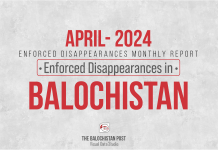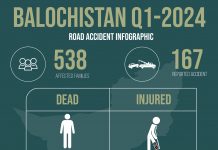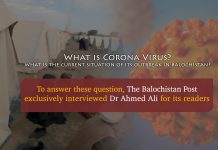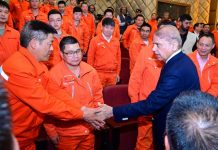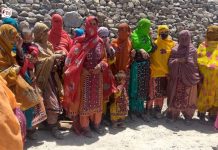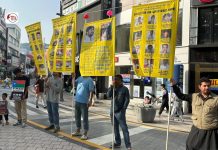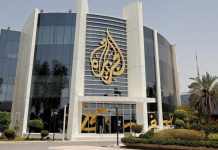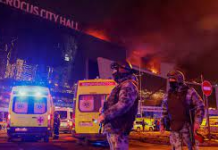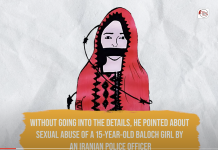Wahag Baloch
In the early fifteenth century, Mir Haji Khan Mirani Baloch founded the city of Dera Ghazi Khan in the name of his son Mir Ghazi Khan. It remained a stable Baloch state for several centuries, ruled by the Baloch tribes “Mirani and Dudai” at different times.
In several different periods, occupiers attempted to take over Dera Ghazi Khan, but they failed. Mir Noori Naseer Khan consolidated the Baloch homeland as a federation in the 17th century. Dera Ghazi Khan was included in the Baloch federation, i.e., Kalat (Baluchistan), which remained intact until the end of the 18th century.
After the British occupation, Balochistan was divided into several parts. One area was administratively attached to Afghanistan, while another large part was divided between Iran and Pakistan. This ended the unity of the Baloch people, resulting in the scattering of the Baloch nation’s population across different countries to this day. After World War II, the British decided to withdraw from the region, and Balochistan’s status as an independent state was restored for a few months. After the forced annexation of Pakistan in 1948, the statehood of Balochistan was abolished in 1955. The Baloch land was then divided based on political and administrative boundaries, and Dera Ghazi Khan was added to the Pakistani province of Punjab in 1951.
If we look at the boundaries of Dera Ghazi Khan on a geographical basis, they are naturally associated with Balochistan. All the populations living in the mountains and plains of Dera Ghazi Khan consist of different Baloch tribes.
Discovery of Uranium in Dera Ghazi Khan
Uranium deposits were discovered in Dera Ghazi Khan in the 1960s. After this discovery, Pakistan Atomic Energy started mining the area of Baghalchar in 1977. Uranium-235 and U-238, which are extracted from here, are scientifically known as yellowcake. About 25,000 kg of uranium is extracted from the region annually.
More uranium has been traced in the mountains of Koh-i-Sulaiman, and traces of uranium have also been found throughout almost the entire mountainous range of Koh-i-Sulaiman.
Eight mining plants have been installed in Koh-i-Sulaiman, including Vashafi, Delana, Zain, Nagarnai (Rakhi Gaj), Sawa Prag, Gohand, and Baghalchar. These plants are located in areas where settlements are merely a few kilometers away. According to the engineers working in these plants, not only uranium, but many other precious metals like Radium and Polonium are also extracted from here.
Due to security threats, the Pakistan Atomic Energy Commission has constructed several underground routes in the entire mountainous belt of Koh-i-Sulaiman and connected them to a central system in the form of tunnels. Further work is in progress on these tunnels from where uranium is transferred to a significantly safe location.
The Pakistan Atomic Energy Commission has restricted the movement of the local population from several mountainous and urban areas of Dera Ghazi Khan and forcibly evicted local people from their lands. Various projects are located in those areas from where nuclear weapons are launched.
Effects of Uranium Mining in Dera Ghazi Khan
Uranium emissions from Koh-i-Sulaiman and nuclear radiation in Dera Ghazi Khan have increased cancerous diseases in these areas. According to local residents of Koh-i-Sulaiman, the increased ratio of cancer is due to the projects of Pakistan Atomic Energy and the radiation coming out from these atomic projects. They claim that these projects are causing the death of hundreds of people every year.
The residents of the area report that after the installation of atomic projects, the indigenous people of Koh Sulaiman and Dera Ghazi Khan have suffered from cancerous diseases like bone marrow, liver cancer, lung cancer, kidney cancer, bone cancer, cerebral palsy, facial tumors, tuberculosis, miscarriage, physical disability, and intestinal cancer.
In 2005, the locals of Baghlchar filed a case in court against the dumping of waste materials in the mountains of Koh-i-Sulaiman. The Pakistan Atomic Energy Commission submitted a report to the court, but it did not yield sufficient results, and no substantial reduction in radiation was seen. The people living here have expressed their concerns many times regarding the dumping of nuclear wastes brought from different parts of Pakistan, but their grievances remained unheard, and the issue was neither addressed nor taken seriously.
BBC reporter Saeed writes that the people of Koh-i-Sulaiman believe that the atomic bombs dropped on the people of Hiroshima and Nagasaki killed them in one go, but here in Koh-i-Sulaiman, they are waiting for our generation after generation to die. When they inquired about this from the representatives of the Pakistan Atomic Energy Commission in the local court, the representatives of the Atomic Energy Commission admitted that the materials are being dumped there from different areas, but they are covered underground and do not have radiation effects in the area. However, the residents of Koh-i-Sulaiman refuse to acknowledge this.
According to Dr. Muhammad Arshad of Dera Ghazi Khan, an oncologist and head of the surgical oncology department in Lahore, the cancer ratio in Dera Ghazi Khan and Koh-i-Sulaiman areas is much higher than in Lahore, but there are no health facilities in these areas.
According to Dr. Pervez Hoodbhoy, an expert in nuclear science, the reason for this silence is the suppression of the legitimate concerns of the people of Dera Ghazi Khan and its surroundings about uranium mining in the name of national security. According to him, there is a fear among the regional people that talking about this issue may lead to unpleasant reactions from Pakistani agencies. He and some of his colleagues planned to visit the area where the uranium was being extracted to assess its effects, but they were prevented from going there.
Dr. Hidayat, who was posted as a gastroenterologist at the District Headquarters Hospital, Dera Ghazi Khan in March 2021, supported this position and said that hundreds of patients have been examined by him so far, and 60 to 80% of people suffer from liver diseases and cancer, which is many times more than other cities.
According to Dr. Hidayat, the possible reason for the high proportion of these diseases in Dera Ghazi Khan is that the people of the villages located around the uranium mines use uranium-tainted water. He said that a large number of people are suffering from liver diseases and cancer even though these diseases usually affect older people.
A doctor affiliated with the cancer department of Ghazi Medical College in Dera Ghazi Khan, who spoke on condition of anonymity, attributed the outbreak of these diseases in Koh-i-Sulaiman and its adjoining areas to contaminated water and climate. Talking about the composition of this pollution, he said that after the mining of uranium, it is cleaned and shaped into loose pieces called yellowcake. According to him, upon drying, the smaller particles of yellowcake then disintegrate into water and air from where they enter the human body.
The federal institutions and the Pakistan Atomic Energy Commission responsible for mining and using uranium have always insisted that the uranium extracted from the mines of Baghlchar is not causing any medical problems. They also claim that international rules and regulations are strictly followed during the extraction and cleaning of uranium.
The public relations manager of the commission, Shahid Riaz, says that his organization not only mines uranium following scientific principles but also disposes off the waste generated during its cleaning in the best way possible. According to him, the commission fulfills its social responsibilities by providing health, education, and clean drinking water facilities to the people of Baghlchar. He insists that uranium mining from Koh-i-Sulaiman has been stopped since 2000, so it is incorrect for local people and doctors to say that these practices are causing an increase in cancer and liver diseases in the local population.
However, the federal budget for 2021-22 appears to contradict their last claim, as Rs 14 crore has been allocated for uranium mining from Koh-i-Sulaiman.
Shahid Riaz says that the chemical composition of uranium found in the Baghlchar area of Koh-i-Sulaiman cannot be used in nuclear weapons. Rather, only medicine and electricity can be made from it. He claims that the harm caused by this uranium to the human environment and health is negligible.
Parvez Hoodbhoy disagrees with Shahid Riaz, though he believes that Baghlchar contains mostly uranium-238, which is commonly used for medicine and power generation. However, he believes that its composition is the same as uranium-235. Therefore, in his view, both types are equally dangerous for human health and the environment.
Pervez Hoodbhoy’s statement can also be confirmed by the American-Iraq war in 1990, after which many American soldiers suffered from severe headaches, liver failure, and kidney inflammation. When health experts tried to find out the cause of these illnesses, it was found that these effects were caused by uranium-238, which was used in the missiles fired by the US and its coalition forces to destroy Iraqi tanks during the war.
The words of former ISI chief General Hameed Gul differ from the views of Pervez Hoodbhoy and Shahid Riaz. He said that uranium was extracted from the Baghlchar area of Dera Ghazi Khan to make Pakistan a nuclear power.
When Yaqoob Chauhan, the Project Manager of Pakistan Atomic Energy Commission Baghlchar was killed in 1989 in Rahi Sind due to security threats, the Pakistan Atomic Energy Commission started fencing all sides of the Baghlchar plants to keep them operational in any circumstance. The installation process of fences is ongoing to this day.
The entire mountainous range of Koh-i-Sulaiman from Tuman Qaisrani to Tuman Khosa lacks health facilities. The Atomic Energy Commission has set up two BHUs at Zain and Ronghar, but they also lack basic medicines and doctors. The residents of Koh-i-Sulaiman do not have access to facilities such as electricity, roads, water, schools, colleges, and healthcare. If they raise their voice, local chiefs and agencies try to silence them.
The political party Baloch Raj, noticing the high incidence of cancer in and around Koh-i-Sulaiman, raised its voice against it and launched an awareness campaign regarding the health of indigenous people and the effects of rising cancer in Dera Ghazi Khan. The people participated in large numbers, but the Pakistan Atomic Energy Commission and secretive agencies are trying to intimidate them. These people are being profiled in Taunsa Sharif and Dera Ghazi Khan, and they were summoned to the police stations of Dera Ghazi Khan and Taunsa Sharif.
Baloch Raj activists say they were warned to stop their campaign against radiation exposure and cancer and were threatened with severe consequences if they did not comply.
Buzdar Ittihad, a local organization in Taunsa Sharif, was also stopped from protesting against cancer and threatened with severe consequences by intelligence agencies.
Conclusion
Various safety measures are implemented around the world to protect people from the harmful effects of radiation from nuclear projects and prevent the spread of diseases caused by radioactive rays. However, in Baghlchar, waste materials from mining activities are not properly disposed off and are instead dumped in drums, poured, and left open in the water. As a result, these waste materials are seeping into the underground water, contaminating it with heavy metals and radioactive materials.
Locals in Dera Ghazi Khan and nearby areas are suffering from various illnesses such as bone marrow, liver cancer, lung cancer, kidney illness, bone cancer, cerebral palsy, facial tumor, tuberculosis, abortion, physical disability, and intestinal cancer. If the Pakistan Atomic Energy Commission does not take prompt action to protect the people and environment from the harmful effects of uranium radiation in Dera Ghazi Khan, the residents of Taunsa Sharif, Dera Ghazi Khan, and Koh-i-Sulaiman may not reach their average life expectancy.

